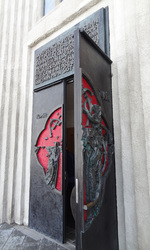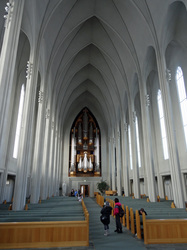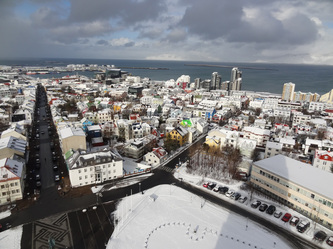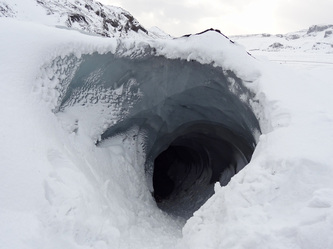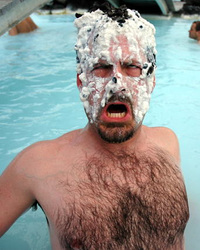|
You’re in Dublin on holidays. You’ve played at the Cobblestone and O’Donoghue's. You’ve delighted in the fine selection of musical accoutrement at Walton’s Music on Georges’ Street and rummaged through the amazing selection of trad CDs at Claddagh Records in Temple Bar. But now you have some free time, and the session at Peadar Kearney's doesn’t start until 5 (which means sometime 5:30ish, Irish Time). What’s a holidaying Irish Trad Player to do? Consider taking a short walk to an historic Dublin Trad Music shop, newly restored and re-opened. Just a 14 minute walk from Oliver St. John Gogarty’s in Temple Bar, straight up Capel Street north of the Liffey, you will find The Horse Shoe. Originally from rural Co. Clare, John Kelly was a highly respected fiddle and concertina player. He moved to Dublin and in 1945, John and his wife, Frances, opened a small music shop at 85 Capel Street. The Horse Shoe quickly became a magnet for many of the eminent trad players of the day. Seamus Ennis, Willie Clancy, Dennis Murphy, Julia Clifford, Patsy Geary, Bobby Casey , Johnny Leary, and Joe Heaney are only a few of those who stopped by for a few tunes and a bit of musical chatter when they were in Dublin. It was from this rich soup of musicians and their chats (and sessions) at The Horse Shoe, and at the nearby Piper’s Club, that was born not only a band, Ceoltóirí Chualann, which included many musicians who later formed The Chieftains, but also where the seeds were planted for the creation of Comhaltas Ceoltóirí Éireann in 1951. The music flowed and the shop even had a tune named for it. The Horse Shoe (An Crú Capaill in Irish) was written by Patsy Geary and is also known as Patsy Geary’s Jig. John Kelly died, and the shop closed in the late 1980s. The shop, like the area in which it is located, decayed. During the Celtic Tiger, the northside neighborhood became an immigrant district and 85 Capel Street became a Romanian Market. Fast forward to 2012. Enter a self taught artist, and an amazing fiddler named Brendan P. Lynch. Brendan purchased the shop, and on November 10, 2012 re-opened the newly restored space to the public. Brendan is indeed a remarkable man. Born in Ballyboughal, north Co. Dublin, he has two solo CDs to his name: Tunes from the Hearth (2000) and From the Heart of Fingal (2005), and he is featured on CDs by many other notable artists. Brendan P. (the P is to differentiate him from the Irish author Brendan Lynch) is also the Music Director at the Arlington Hotel in Temple Bar so if you have seen the Irish Cabaret there, you have probably seen him perform. But that’s not the end of the story. The restored Horse Shoe is also used as gallery space to showcase Brendan’s beautiful line drawings, photographs and watercolours. The rooms (on 3 floors) are small, but the art and music they contain are mighty. And there you will also meet Brendan. The shop doesn’t open until 11. Brendan is a musician, after all – mornings are for yoga instructors and people with small children. And it closes at 5 - Brendan is playing out most nights. But if you bring your instrument, you might be able to get a lesson on fiddle, banjo, mandolin or bodhrán. Or look at his selection of lovingly restored fiddles. You might find yourself bringing home an extra special souvenir of your time in Dublin. I did. And now I wish I was as good as my fiddle. But even if you’re not musically talented, come and soak in the history of the place. A man with an easy laugh, Brendan will regale you with stories of the small history of Irish music. In a fitting bookend to the shop's personal music history, one of his first acts upon re-opening The Horse Shoe was to invite John Kelly’s family to a session in the shop. So that’s the story. A piece of history preserved. A new chapter begun. Best of luck to Brendan, and I thank him for his part in passing the music on. And if you're in Dublin, say hi to Brendan for me! The Horse Shoe 85 Capel Street Dublin, 1 Open 11 – 5pm most days I'll leave you here with a segment from RTÉ in June 1977. John Kelly, Sr, John Kelly Jr, and James Kelly (from the group Planxty) play Ceathrú Cavan/The Wild Irishman. UPDATE: Sadly, The Horseshoe closed it's doors in June of 2014. A shame, really.
3 Comments
According to the Icelandic government website, on January 1, 2012 the population of Iceland was 319,575. That’s about the population of St. Louis, Missouri, spread over an area equivalent to the state of Kentucky. In other words, it’s small. And all I really knew about Iceland before I traveled there was: 1. They had a volcano that had erupted in 2010, the ash from which closed airports around Europe, and nearly cancelled a trip I had planned to the UK, and 2. During the 2008 World Banking Crisis, the Icelandic government had, unlike Ireland and other EU countries, let their banks fail rather than saddle their taxpayers with crippling debt. Well, it’s 2012, and while no one can say the Icelandic economy is back to the boom years, Iceland is definitely open for business. We arrived at Keflavik International Airport in the pre-dawn hours of the morning and discovered the first thing about being a tourist in Iceland. Things are expensive. The airport is about a 45 minute drive from Reykjavik, and you have 3 choices: rent a car, take the Flybus, or hop in a taxi. The rental was a non-starter as our tour plans did not require a car. The Fly Bus was going to cost the 4 of us 10,000 Icelandic Krona (about $80 USD) for a trip to the Reykjavik Central Bus terminal, where passengers are off loaded to smaller buses which take them to their hotels. Somehow having to wait in various lines, and load and unload our luggage multiple times did not appeal after a sleepless overnight flight. So we opted for the taxi., which cost us $120 USD to the door of the Hilton Nordica. In the taxi we learned our second and third Icelandic lessons: everyone in Iceland speaks passable English (though I wouldn’t want try to discuss Proust's use of religious imagery, or nuclear physics), and no one lets the weather slow them down. The sky was still black as we settled in the back of the taxi. Fat, white snowflakes filled the path of the taxi’s headlights, obscuring everything but the blurry, red glare of the tail lights of the vehicles we followed. Still the cabbie raced down the highway, slipping here and there as his tires lost traction over patches of ice. In reckless style that would do a Manhattan cabbie proud, our driver defended his lane from invading trucks and passed out the less stouthearted. Pretending nonchalance, my husband quietly pull his seat belt on, and the rest of us quickly followed suit. Fortunately, we did not become Iceland's latest road fatalities, and after a nice shower and even nicer nap, felt ready to take on the capital city of Iceland. Reykjavik is home to 60 percent of Iceland’s population, and is the world’s northern most capital city, but it’s still a small town. Think Portsmouth, New Hampshire or Newport, Rhode Island. There aren’t a lot of flashy or gimmicky tourist attractions to visit, although there are definitely the usual number of souvenir shops. The beautiful fleece lined Icelandic knit hat I bought was 33,000 Icelandic Krona. I nearly put it back on the shelf, until my husband reminded me that one Krona is worth approximately .08 US cents. And there’s no tipping in Iceland. A friend (thanks, Mike!) had told us this before we left Boston, but coming from the land of the Free and the Home of the 20% gratuity, we still felt uncomfortable about leaving a table littered with dirty dishes but no coinage. So I flagged down our waitress at the Café Paris, and asked her if indeed we shouldn’t leave her a little something extra. She was flustered by the question, but when I assured her that I wasn’t trying to be fresh, I just wanted to do the right thing, she relented and admitted that tipping was not expected and that the restaurant paid the waitstaff a living wage. My husband did notice that there was a tip glass near the bartender, but the few lonely bank notes in it were American currency – no Krona. It seems we weren’t the only tourists who weren’t sure of local custom – we were just the ones who thought to ask. One of our two favourite tourist sites in Reykjavik was Hallgrímskirkju, the largest church in Iceland (Lutheran). The architecture was unusual, and the views from the Bell Tower were superb. I found it interesting that the interior space, unlike a European church of similar age, was simple and unadorned. But the clean lines reflect light beautifully, and in a country where there are months at a time with scant daylight, that seems like a very clever design choice. (Click on photos to enlarge) The other of our favourites was the National Museum. Well laid out and well labeled (in English!), it provided a history of Iceland through commentary and artifact that really helped World History ignorant North Americans understand how Iceland came to be what it is. There’s one other museum I feel I must mention. My husband found a pamphlet for it, but sadly my daughters and I just never could find the time in the schedule to accompany him there. It was called The Icelandic Phallological Museum, and it is home to more than 215 male phalluses, from mouse to whale, including a number of homo sapiens specimens. The curator is described as “a child of Nature, a hunter/fisher and a self-taught master chef. As a second generation phallologist he is expected to set the standard for phallology worldwide.” I wish we could have found the time to stop by and ask the Curator how the specimens were harvested, but alas, we may never know. Perhaps it's better that way. Our other two most favourite things to see are easy to choose: The Blue Lagoon and Sólheimajökull. I won’t even attempt to tell you how to pronounce Sólheimajökull. I never learned how, even though I tried, and am fairly good at wrapping my tongue around other languages. But Sólheimajökull is a glacier about 2 hours drive from Reykjavik, and it is well worth the drive. We took a tour with MountainGuides.is. They showed us how to strap the crampons to our boots, handed us ice axes, and took us for a long glacier hike. The scenery was amazing, and when the sun broke through the clouds, the sky looked like a Renaissance painting of glories from heaven. A soul soothing activity! If you have a late afternoon or evening flight, the Blue Lagoon is a perfect way to end your Icelandic holiday. The tour bus collects you and your luggage from your Reykjavik hotel about 9am. The tour company has a small, secure area at the Blue Lagoon to store your luggage while you soak yourself in Iceland’s largest thermal pool. It’s the one time in my life I was happy to be up to my ears in hot water, especially once I discovered the swim-up bar. Live Blue Lagoon Webcam (remember they're 5 time zones ahead) It’s pretty sweet to be holding a cocktail and letting the falling snow melt on the top of your head while the rest of you is toasty warm in the mineral water. Just beware of people whose faces are slathered in algae and mineral mud sneaking up on you. Spa gurus say it’s therapeutic and cures many skin ailments. I say it dried out my skin and made me look damn silly in the process. Mid afternoon, once you are showered and wrapped snugly back in your warm parka, you are transported to Keflavik Airport to start your homeward journey.
So what have I learned about Iceland since I visited? Well, it’s still small. I hope the banks don’t fail again, and in all probability the volcano will erupt once more. But, for symmetry’s sake, two points: 1. I think I would spend less time in Reykjavik, and a lot more time in the country side. Iceland is all about breathtakingly beautiful scenery and glaciers and geothermal pools and volcanoes and riding the short shaggy Icelandic horses. There are farm stays and kayaking adventures, and the food is very tasty, even for someone who prefers to eat meat, not fish. 2. Just because a place is small, and possibly less glamorous than other parts of the world doesn’t mean it doesn’t have something new to show us. We only need to slow down and enjoy the experience. For me, going to the Guinness Storehouse tour in Dublin is something of a let-down. I find it unengaging and disjointed. Admittedly, I'm in the minority here. Trip Advisor reviewers rated it the 24th best of 218 attractions in Dublin. I've been 4 times (don't ask) and I keep trying to like it, but I just can't warm to it, unlike the tour at Kilmainham Jail, which ranked 4th on the Trip Advisor list. And it's pricey. Buy the tickets online at the Guinness website for a small discount (better than nothing) and to avoid the hordes of tourists in line waiting to buy tickets. Don't worry, though, you'll meet them all again later inside. The best part of the whole experience, with the possible exception of the Gravity Bar and its free pint, (if you can find a place to sit to drink it) is the small room tucked off to the side on one of the upper floors dedicated to Guinness advertisments. I LOVE the vintage Guinness ads. I love their textual simplicity and repetition of characters like the Zookeeper and lobsters and the TOUCAN. I love the toucan. But how did Guinness come to chose a tropical bird with a big beak to be the mascot of a stout beer? The short answer is no one knows for sure. But there are some broad clues. The Guinness Toucan first appeared in 1935, and was the brainchild of artist John Gilroy, who worked for a London advertising agency. Said Gilroy in the London Times: "The Guinness family did not want an advertising campaign that equated with beer. They thought it would be vulgar. They also wanted to stress the brew's strength and goodness. Somehow it led to animals." For over 45 year the Toucan was an iconic symbol of Guinness. Around 1982, Guinness decided to retire the Toucan, and go in other directions. Personally, I miss him. Although as we've moved into the digital age, some Guinness advertising is still quite amusing: "Why", my husband asks me -- not for the first time -- "Didn't you take up the whistle?" He's surveying the quantity of goods scattered around our bedroom that I hope to cram into the waiting suitcase for my trip this evening to Dublin. I'm going to the Temple Bar TradFest, and no, it's not too many clothes that are evoking his dismay. Trad musicians don't tend to be fashion plates. The main object of his concern is my gorgeous, built like a tank, 18" Mance Grady bodhrán. When I first purchased it from Mance, he respectfully suggested that a woman of my size -- a mere 5'2" -- might be better off with a smaller diameter drum. But nothing would do for me but the deep booming tones of the 18". However Aer Lingus, in its airline wisdom, will not allow my baby to be brought as carry on luggage and forces me to check my lovely drum with the dirty laundry and toothpaste that inhabit the depths of the cargo hold. I'm not typically a nervous flier, but exposing my prize possession to the tender mercies of the baggage handlers causes hives to form on my neck and I tend to drink too much on the flights on which my bodhrán accompanies me. This isn't the first time my bodhrán has crossed the Atlantic. The last three years, it has come with me each May to the World Bodhrán Championships in Miltown, Co. Kerry. I wish it were eligible for Frequent Flier miles -- then eventually it would have a ticket for a seat right beside me, and I wouldn't have to drink that third bottle of red wine. But I have worked out a system. Loosen the lugs as easy as they can go. The skin flops like Ethel Merman's upper arms. Cut two pieces of thick foam core to the drum's diameter. One goes on the drum head, the other on the inside of the drum by the skin. Put the drum back in it's case. Stuff all my socks and soft T-shirts and ladies' unmentionables inside the drum to pad it out to the edge of the rim and roll all my jeans and sweaters around it to try to cushion the inevitable game of Kick the Can that baggage handlers appear to delight in. So far, so good. Each time it has arrived safely and tuned up beautifully, and I had a great time playing it in classes, workshops and pubs.
But this trip, the plane leaves in an hour and a half. (Thank you, Logan Airport, for the free wi-fi.) I've already check my suitcase (drum inside) and entrusted its welfare to Aer Lingus. My heart is racing and my palms are starting to sweat. Please please PLEASE be good to my baby. I've ordered a 16" bodhrán from Mance. He's working on it even as we speak. That should satisfy the carry on requirements. And bring down my blood pressure ... ===================================================================== ===================================================================== Originally printed in February 2010, but the website it was on crashed and burned and is gone now. Yes, my 16 inch drum is gorgeous (thank you, Mance) AND it fits in the overhead compartment. |
Archives
March 2013
Search Words
All
|









